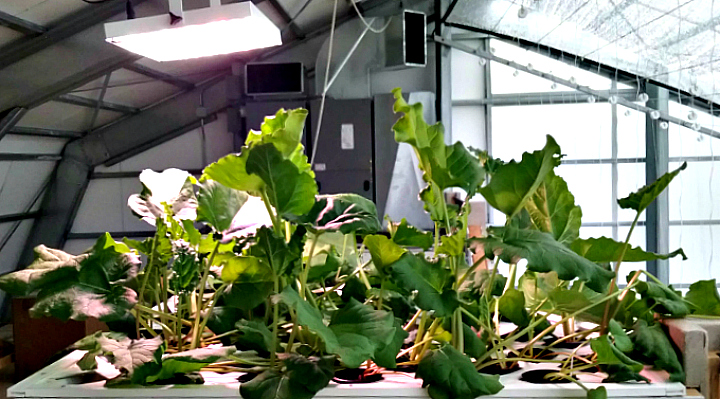
We often grow rhubarb in our greenhouse. Give us a call to see what is growing now.
Rhubarb is a leafy fibrous plant, usually prepared and eaten much like fruit as a sweet-tart treat. The fleshy, edible leaf stalks are used in cooking, but the large, triangular leaves are inedible. The small flowers are grouped in large compound leafy greenish-white to rose-red.
Is it a Fruit or Vegetable?
Although rhubarb is a vegetable, it is often put to the same culinary uses as fruits. The leaf stalks have a crisp texture (similar to celery, although it is in a different family). The stalks look like rosy-colored celery. While rhubarb is typically pink, it can also be a pale green, but the color doesn’t indicate its level of ripeness.

About 3.5oz of rhubarb contains nine percent of the daily recommended amount of calcium, and 5g of fiber. Rhubarb is also high in vitamin K (which is essential for strong bones), vitamin C, iron and manganese. For more health benefits.

How is it Grown?
We grow it from seed using the Kratky method (using nutrient rich water instead of soil). The water is aerated to provide adequate oxygen to the roots.
What Does it Taste Like?
If you haven’t tried rhubarb, you might be curious about how it tastes and how to eat it. Have you eaten green apples with salt? That will give you an idea of what it tastes like. Adding salt brings out the sweetness. When sweetened, it has a very sweet/tart acidic flavor.
Ways to Eat Rhubarb
You can eat it raw, some sprinkle salt on it, some use it in smoothies. You can also add sweetener, or combine it with fruits like strawberries and then cook it in recipes such as pies, cobblers, jams or sauces.
Interested in seeing what else we grow?
